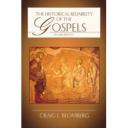I was in Dublin yesterday at the National Museum of Ireland – Archaeology. As well as the splendid Tara Brooch and Ardagh Chalice, were the “bog bodies”. These brown remains of men preserved in Ireland’s peatlands are in stark contrast to the shimmering gold of our iconic national treasures. They are brown, leathery, hollow shadows of their former owners. Only one of them had most of its limbs intact. All of them were twisted and flattened. And yet, in archaeological terms, they are outstandingly preserved with skin and hair still present. They are celebrated for their preserved condition and what they tell us of Ireland in the Iron Age. In contrast, there is very little left of all those who perished in their time who did not end up in the bog. I couldn’t help but reflect on my own mortality. 2500 years from now, is the best I can hope for to be found in a bog, leathery and hollow?
In a sense, yes – I am only here for a short while. But in another sense, no. Well, I believe not – as a Christian, I have a hope in something greater, in a heaven without rot or illness or decay or violence (all these men were murdered). I even have a hope in a new body, as crazy as it sounds. Yet, sitting on the ground floor of the National Museum of Ireland – Archaeology, looking into a glass case, at the flat remains of some poor guy in his twenties who was stabbed in the head and turfed into a bog – and he was one of the wealthy people – I couldn’t feel anything but… small. Like a flower of the field, here today and gone tomorrow, as the Hebrew Scriptures observe. It was certainly a grounding experience.
So, I cling to the hope I have. Hope, in someone who walked the Earth not long after these bog men, actually. Hope in God through Christ, who defeated death and is “preparing a place” for us, if we would follow Him here and then there.
I feel glib, saying these things. It is not that I believe these things blindly or simply out of fear. Yes, I do want to believe that the claims of Christ are true, that He was and is who he said He was but I do question and I do have my doubts. I have written before about Lewis’ trilemma – Jesus was either mad, bad or God – lunatic, liar or Lord – to say the things he said about himself. Or he didn’t say them at all – if we question the Gospel accounts of his life. My position is that not only am I inspired and awed by the character of God as revealed in the person of Christ but from what I have read and what I have thought through and what I have experienced, I believe that Jesus was who he said he was. The Gospel accounts are more reliable than any other ancient texts and more reliable than many give them credit for. His character and his story are compelling. He is my hope now and 2500 years from now, whether in the bog or out of the bog.
Currently out of the bog,
JcJ
Filed under: Apologetics, Faith, History | Tagged: archaeology, bog, C.S. Lewis, Christ, Gospels, mortality | Leave a comment »



Facilitating Connections
“technology must always work toward facilitating greater connection and communication between human beings.” [from the post cited below]
I find my friend Shane a very interesting guy: he likes the arts, spiritual disciplines and remembering the practical jokes of his youth leader days, amongst other things. I like chatting with him. So, it’s not suprising that I found his blogpost on Risen Magazine interesting. Check it out here if you are interested in thinking about technology, the mission of God on earth, hurrying and other things that you might not connect together. Or if that turns you off, have a read and be reminded how dependent we are on technology.
(Also, see my comment on his post!).
Facilitating connections,
JcJ
Filed under: Faith, Social Commentary, Technology, Thinking | Tagged: friends, mission, myfriendShane, people, Risen Magazine, Technology | 1 Comment »